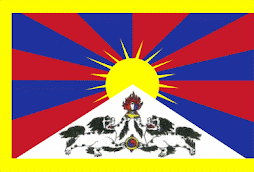Years of Chinese government denunciations and decades in exile have not loosened the Dalai Lama's influence over Tibetans in his homeland, where his banned image remains treasured.
This month marks not just the first anniversary of violent anti-Chinese protests across the Tibetan world, but also the 50th anniversary of the flight into exile of the Dalai Lama after a failed uprising against China in 1959.
Tibetan reverence for the Nobel Peace Prize-winning Buddhist monk runs especially deep in China's Qinghai province, where the Dalai Lama was born in 1935. Qinghai, known to Tibetans as Amdo, neighbours Tibet proper and is home to many ethnic Tibetans.
"We worship him. He's in the hearts of every Tibetan," said one young monk called Wenden, standing outside a monastery full of pictures of the Dalai Lama, whose image is not supposed to be shown in China.
"He's much more important to us than the president," added Wenden, who like many Tibetans goes only by one name, dismissively referring to President Hu Jintao.
"Please tell the world how much we love our Dalai Lama."
Yet there can also be fear in talking about the Dalai Lama, perhaps most obviously in Taktser, the small Tibetan village of his birth.
The tumbledown house where he was born still stands, next to a small temple, in the poor, mountainous village some two hours along a rutted track from the provincial capital Xining.
A rotund Tibetan with bloodshot eyes and ruddy cheeks rushed out of the house nervously at the approach of foreigners.
"It's very tense here. The police come around often. If you stay it will cause me many problems. Please leave now," he pleaded.
Other villagers gave monosyllabic answers to questions about the Dalai Lama, or simply walked away.
The setting is stunning. On a ridge in the middle of a valley over which Taktser looks stands a solitary white stupa, gently fading in and out of view amid a light flurry of snow.
LOVE THE DALAI LAMA
At another Qinghai monastery, in the heavily Tibetan county of Tongren, monks prostrate themselves in front of altars adorned with large pictures of the Dalai Lama.
"We're not supposed to have these pictures. When they come to check we take them and hide them," said a monk, decked out in flowing vermillion robes, who asked not to be identified for fear of repercussions for speaking to a foreign reporter.
"It goes without saying we love the Dalai Lama," he added. "When he will return, who can say? It's hard for us even to get any news of him."
Nobody appears to pay much attention to a small sign, written in Tibetan and Chinese, hidden in a small, dark corner near the temple's roof vault.
"Oppose incitement, splittism and other illegal activities by foreign hostile religious forces," read one of the rules on the sign, a reference to the Dalai Lama, whom China accuses of seeking independence for Tibet and for stoking unrest.
"Oppose incitement, splittism and other illegal activities by foreign hostile religious forces," read one of the rules on the sign, a reference to the Dalai Lama, whom China accuses of seeking independence for Tibet and for stoking unrest.
The Dalai Lama has repeatedly denied China's charges, saying what he wants is merely greater autonomy for Tibet.
"I too have seen Dalai Lama pictures in houses ... I've even seen them with Chairman Mao," said Lian Xiangmin, a professor at the China Tibetology Research Centre in Beijing.
He added that public reverence of the Dalai Lama's image would be "inappropriate", especially for Communist Party members, because of his political role.
But love for the Dalai Lama transcends the clergy and extends into broader Tibetan society where many resent Chinese rule.
China has defended its rule in Tibet, saying life has improved for most Tibetans since the Dalai Lama fled. China has poured money into the Himalayan region and opened a 1,142-km (710-mile) railway linking it to the rest of China.
"The Dalai Lama is our sun," said Sonor, a government worker from the Qinghai-Tibet border.
"The Chinese are very bad. Not only do they kill our people, they kill their own, like in 1989," he said, referring to the government's crackdown on pro-democracy demonstrators in and around Beijing's Tiananmen Square 20 years ago.
Memories of last year's unrest in Lhasa and surrounding Tibetan areas, in which the government says 19 civilians died while exiled groups put the numbers much higher, burn deep.
"They come here with guns," Sonor added. "How can we fight back? We have nothing but our bare hands."
In


















No comments:
Post a Comment